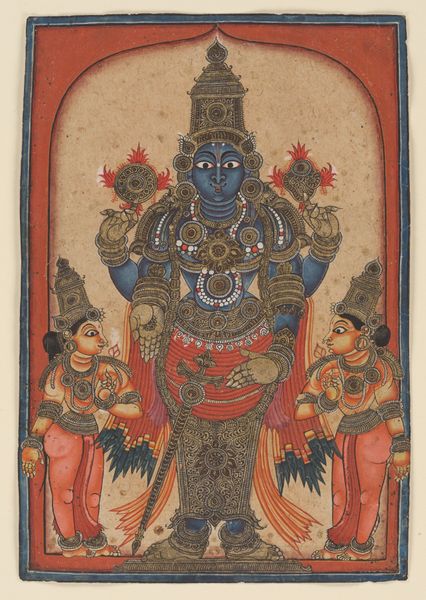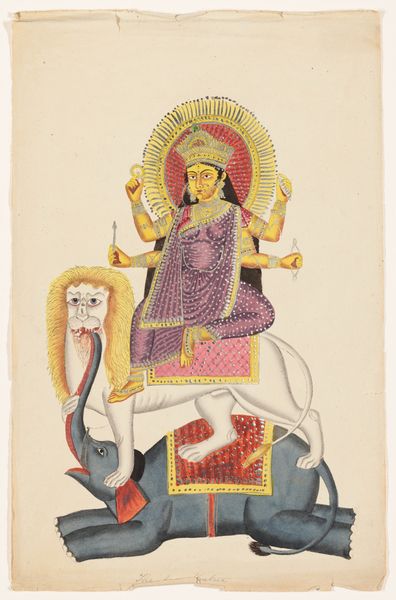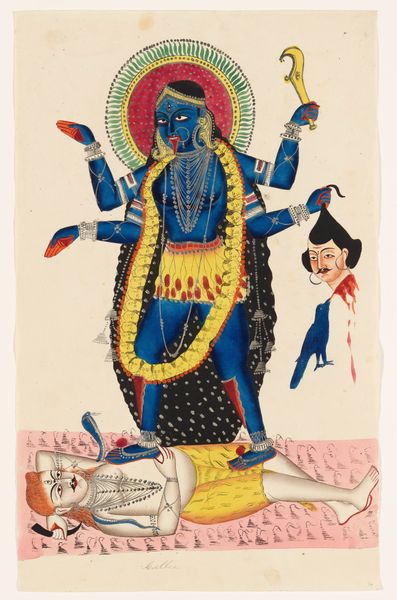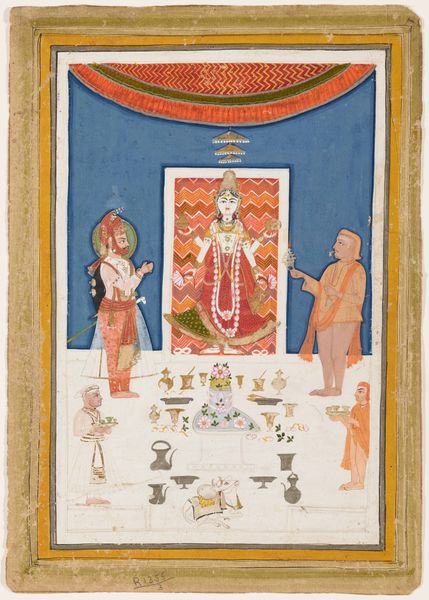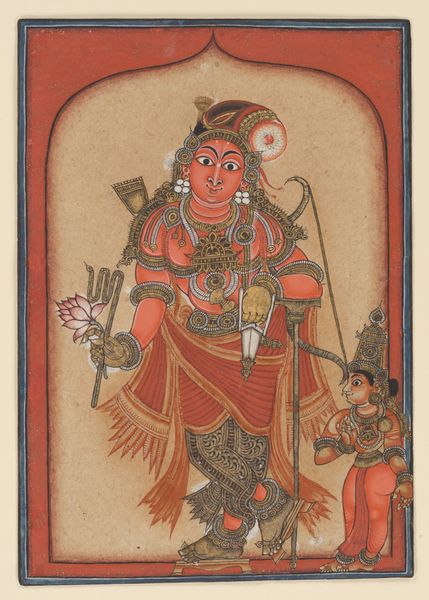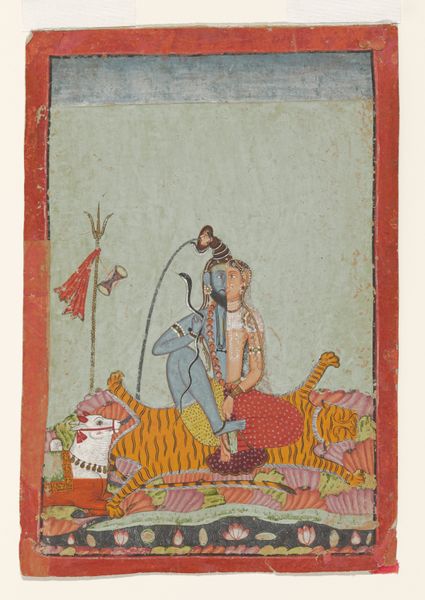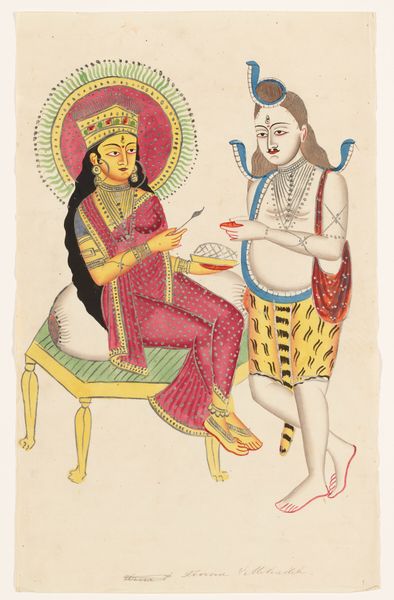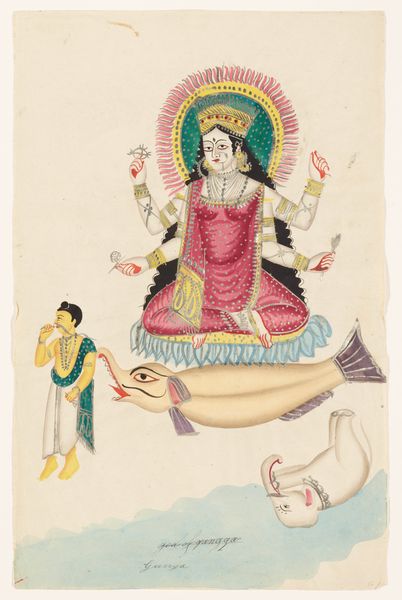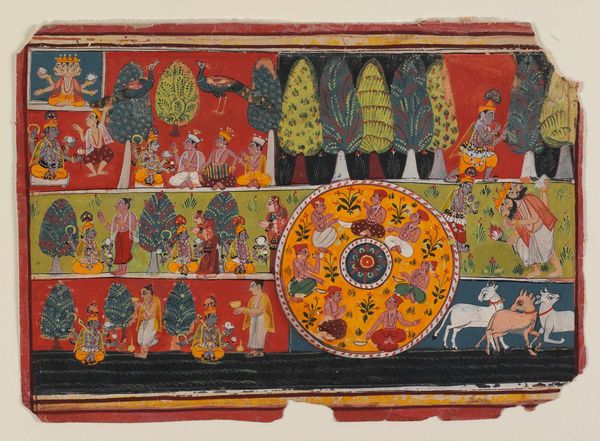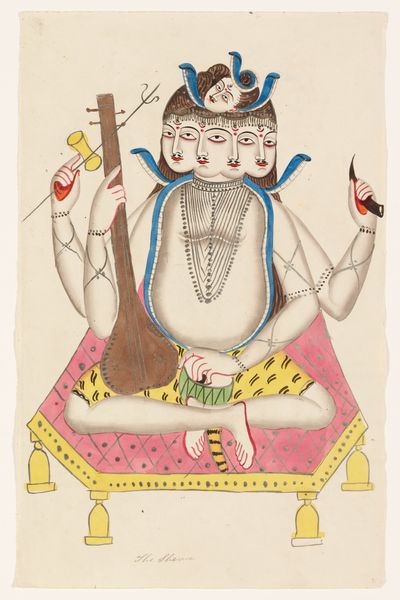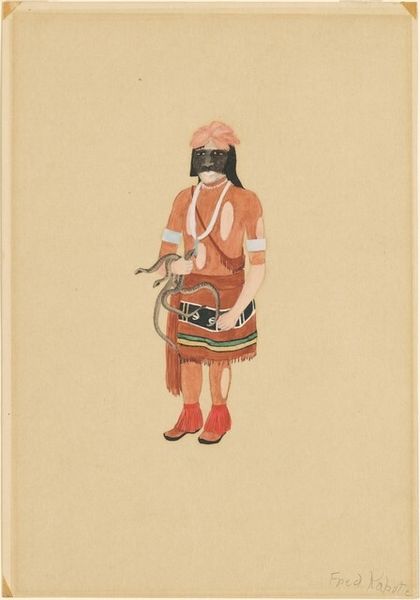
Dimensions: 10 7/8 × 7 7/8 in. (27.62 × 20 cm) (image)25 1/2 × 21 3/4 × 1 in. (64.77 × 55.25 × 2.54 cm) (outer frame)
Copyright: Public Domain
This painting at the Minneapolis Institute of Art depicts Krishna’s cosmic form, a theophany, revealing the universe contained within him. The multiple arms radiating from his body grasp various weapons and sacred objects, symbols of his power and dharma. The many faces above Krishna may be interpreted as all-seeing awareness, a visual representation of the divine presence. Such imagery of multi-limbed deities, while prominently Hindu, echoes across cultures and time. We see similar motifs in ancient Greek depictions of Hecate, or even the Christian concept of the many-eyed angels. The cosmic form, a manifestation of the divine, taps into a deep, collective memory, a desire to visualize the infinite and the eternal. This urge resurfaces time and again. It is an attempt to grasp the unknowable through symbolic representation, providing comfort and understanding in the face of the cosmos. The proliferation of heads conveys the overwhelming feeling of divine awareness. This symbol of the divine goes beyond cultural boundaries, evolving and reappearing in different guises throughout history.
Comments
minneapolisinstituteofart about 2 years ago
⋮
The striking imagery of this painting was inspired by the Bhagavata Gita (200 BCE-300 CE), a foundational text in Hinduism that lays out key moral doctrines and emphasizes personal devotion (bhakti) to God. Here, the artist illustrates a pivotal conversation between the epic hero, Arjuna (identified by inscription in the bottom left) and Krishna, in which Krishna gives Arjuna special sight in order to reveal the majesty of his cosmic form, Vishvarupa, or Vishnu “Having all Shapes.” Depicted with fifty-six multi-colored heads and fifty-six brandishing arms, the Cosmic Form of Krishna towers upright, his all-encompassing aura swelling to the borders of the page. Brhama, Shiva, the sun and the moon are among the gods who peak through the long locks of his beard. His dress (dhoti) is imagined as a mountain— representing the earth—with gushing streams, and beneath is a radiating splay of assured feet. The image articulates the boundless benevolence of Krishna (or Vishnu), with the representation of the cosmic body underscoring pan-Indic notions of yogic insight and transformation. That is, the equivalence of Self with the Absolute (brharman) that constitutes ultimate reality.
Join the conversation
Join millions of artists and users on Artera today and experience the ultimate creative platform.

